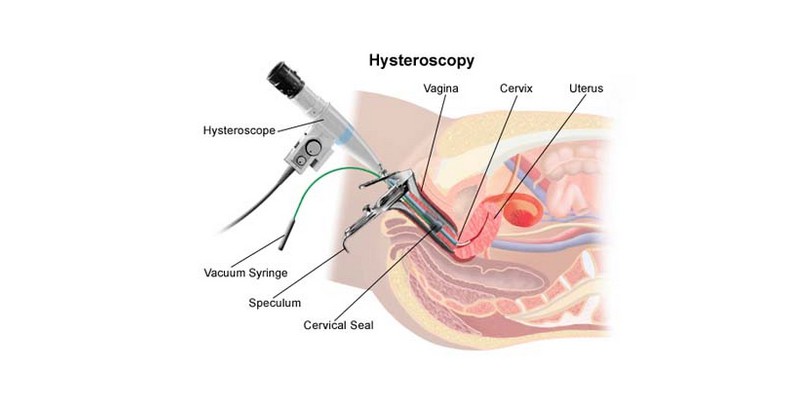Laparoscopic myomectomy

Laparoscopic Myomectomy: A Minimally Invasive Solution for Uterine Fibroids
Uterine fibroids, also known as leiomyomas, are noncancerous growths that develop in or on the uterus. While often asymptomatic, they can cause significant discomfort and complications, such as heavy menstrual bleeding, pelvic pain, and fertility issues. For women seeking to preserve their uterus and address these symptoms, laparoscopic myomectomy offers an effective and minimally invasive surgical option.
This blog explores laparoscopic myomectomy, including its indications, benefits, procedural details, recovery, and potential risks, to provide a comprehensive understanding of this advanced surgical technique.
Understanding Uterine Fibroids
What Are Uterine Fibroids?
Fibroids are benign tumors composed of muscle and fibrous tissue. They can vary in size, from microscopic growths to large masses that distort the uterus. Fibroids are categorized based on their location:
- Submucosal Fibroids: Located beneath the inner lining of the uterus, often causing heavy menstrual bleeding.
- Intramural Fibroids: Develop within the muscular wall of the uterus, potentially leading to an enlarged uterus and pelvic pain.
- Subserosal Fibroids: Found on the outer surface of the uterus, sometimes pressing on nearby organs.
- Pedunculated Fibroids: Attached to the uterus by a stalk-like structure, either inside or outside the uterine cavity.
Symptoms of Uterine Fibroids
While some women experience no symptoms, others may encounter:
- Heavy or prolonged menstrual bleeding
- Pelvic pain or pressure
- Frequent urination
- Difficulty emptying the bladder
- Constipation
- Back or leg pain
- Infertility or recurrent pregnancy loss
What Is Laparoscopic Myomectomy?
Laparoscopic myomectomy is a minimally invasive surgical procedure to remove uterine fibroids while preserving the uterus. This approach is particularly beneficial for women who wish to maintain their fertility or avoid more invasive surgical options, such as a hysterectomy.
Indications for Laparoscopic Myomectomy
Laparoscopic myomectomy is recommended in cases where fibroids cause:
- Significant pain or discomfort
- Heavy or irregular menstrual bleeding
- Fertility issues or recurrent pregnancy loss
- Pressure on surrounding organs, such as the bladder or bowel
- A desire to preserve the uterus for future pregnancies
Benefits of Laparoscopic Myomectomy
Compared to traditional open surgery, laparoscopic myomectomy offers several advantages:
- Minimally Invasive: Small incisions result in reduced trauma to the body.
- Faster Recovery: Most patients resume normal activities within 1-2 weeks.
- Reduced Pain: Less postoperative discomfort compared to open surgery.
- Lower Risk of Complications: Minimal blood loss and reduced risk of infection.
- Preservation of Uterus: Maintains the possibility of future pregnancies.
- Improved Cosmetic Outcomes: Smaller, less noticeable scars.
Preparing for the Procedure
Preoperative Evaluation
Before undergoing laparoscopic myomectomy, patients undergo a thorough evaluation, including:
- Medical History and Physical Examination: To assess overall health and symptoms.
- Imaging Studies: Ultrasound or MRI to determine the number, size, and location of fibroids.
- Blood Tests: To check for anemia and assess overall health.
- Medication Management: Adjustments to medications, such as blood thinners, as advised by the surgeon.
Patient Preparation
- Fasting: Patients are instructed to avoid food and drink for 8-12 hours before surgery.
- Informed Consent: The surgical team explains the procedure, potential risks, and expected outcomes.
The Procedure: Step-by-Step
1. Anesthesia
Laparoscopic myomectomy is performed under general anesthesia, ensuring the patient is unconscious and pain-free throughout the procedure.
2. Incision and Laparoscope Insertion
Small incisions (typically 3-4) are made in the abdominal area. A laparoscope—a thin, lighted tube with a camera—is inserted through one incision to provide a clear view of the uterus and surrounding structures on a monitor.
3. Removal of Fibroids
Specialized instruments are used to:
- Identify and isolate the fibroids.
- Cut and remove the fibroids while preserving the healthy uterine tissue.
- Repair the uterine wall using sutures to restore its structural integrity.
4. Tissue Extraction
Larger fibroids are often broken into smaller pieces using a process called morcellation, enabling their removal through the small incisions.
5. Closure
The incisions are closed with sutures or surgical glue, and the patient is moved to a recovery area.
Postoperative Recovery
Immediate Recovery
- Patients are monitored in a recovery room for a few hours after surgery.
- Pain medication is provided to manage discomfort.
- Light activities, such as walking, are encouraged to prevent blood clots.
At Home
- Rest and Recovery: Most patients can return to normal activities within 1-2 weeks, though strenuous activities should be avoided for 4-6 weeks.
- Follow-Up Appointments: Regular check-ups ensure proper healing and address any concerns.
- Managing Side Effects: Mild side effects, such as bloating or spotting, are common and usually resolve quickly.
Potential Risks and Complications
While laparoscopic myomectomy is generally safe, potential risks include:
- Bleeding: Excessive blood loss during or after surgery.
- Infection: Rare and treatable with antibiotics.
- Organ Injury: Accidental damage to nearby structures, such as the bladder or bowel.
- Adhesions: Scar tissue formation that could lead to pain or infertility.
- Uterine Rupture: Rare risk during future pregnancies, necessitating careful monitoring.
Fertility and Pregnancy After Myomectomy
Laparoscopic myomectomy is often performed to improve fertility outcomes. After the procedure:
- Most women can attempt conception within 3-6 months, depending on their recovery.
- Pregnancies should be closely monitored, especially if the uterine wall was extensively repaired.
- Delivery by cesarean section is often recommended to minimize the risk of uterine rupture during labor.
Conclusion
Laparoscopic myomectomy is a transformative option for women seeking relief from fibroid-related symptoms while preserving their fertility and avoiding more invasive procedures. By offering a minimally invasive approach, this surgery combines effective fibroid removal with quicker recovery and improved quality of life. If you are experiencing symptoms related to uterine fibroids, consult a qualified gynecologist to explore whether laparoscopic myomectomy is the right choice for you.
With advancements in surgical techniques and technology, women today have more options than ever to address fibroids effectively and regain control of their reproductive health.

